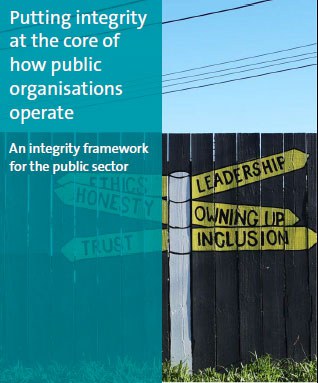People processes
Why it matters: Makes values and ethical behaviour significant to staff, supports organisations in effectively managing individual behaviour
Linking staff to integrity and values through the design and operation of each stage of the employee lifecycle is critical in embedding integrity into a workplace.38
Leaders must be seen to make the hard decisions when their direct reports aren’t displaying the values. Often, we find that, because an individual is ‘delivering’ the work, we are willing to tolerate a greater level of poor behaviour.
RDC Group Limited (2020), Civil Aviation Authority Organisational Culture Review
When considering a person's performance in their role, ensuring that their behaviour aligns with the organisation's values is as important, or potentially more so, than what they have achieved.
If an individual does not demonstrate the values and behaviours appropriate to their role, the consequences will affect their colleagues and potentially undermine how the organisation is viewed by the public.
What it looks like: Values are factored into and reinforced by the behaviours that organisations recruit for, reward, and encourage
The organisation's values should be integrated throughout all parts of the employee lifecycle to encourage, reward, and monitor ethical behaviour of all staff.
The following, drawn from research, describes how an organisation can look to integrate its values in each employee lifecycle stage.39
In the interview process, I was asked to choose a value and speak to it.”
Government department staff member
Recruitment
When recruiting, be clear what the organisation's values are and what the organisation expects in terms of integrity and conduct. The recruitment process should include ways to test for alignment with values.
Everyone gets the same messaging through the induction process, which builds the affinity to the processes and values that are shared.”
Government department staff member
Induction and orientation
Induction processes should prioritise discussion about the organisation's values and how they are applied in the day-to-day work of staff.
Performance assessment and learning and development
The culture of an organisation is influenced much less by what it says than by what it chooses to measure and reward. When assessing performance, include consideration of how an individual's behaviour aligns with the organisation's values. This ensures that both what was done and how it was done are assessed.
When performance assessments are simply a compliance exercise for staff and management, it can send a strong message to staff about whether and how they are valued. Regular feedback about both performance and behaviour can help staff to develop and improve.
Ongoing training on ethics and integrity should also be provided. Everyday discussion about ethics, values, and integrity between staff is a sign of a healthy organisation.40
Career development
The process of identifying an individual for progression should be as thorough as that for any external recruitment, not least because the organisation has less excuse for getting it wrong – it has past performance and behaviour to inform its decision. When someone is promoted, there will be an implicit assumption that your organisation approves of that individual's behaviour and how well they live the desired values.
Exit interviews
These provide an opportunity to gain insight into how values and desired behaviours are perceived and practiced in your organisation.
 |
It's worth considering...
|
38: Employee lifecycle is a human resources model that identifies the different stages a staff member moves through in an organisation, as well as the role human resources teams play in optimising that progress.
39: For more information see Eccles, A, Newton, E, and Shaw, H (2013), Performance with integrity – Linking performance to values: A toolkit, City Values Forum and City HR Association.
40: De Graaf, G (2010), "A Report on Reporting: Why Peers Report Integrity and Law Violations in Public Organizations", Public Administration Review, Vol. 70, No. 5, pages 767-779.

